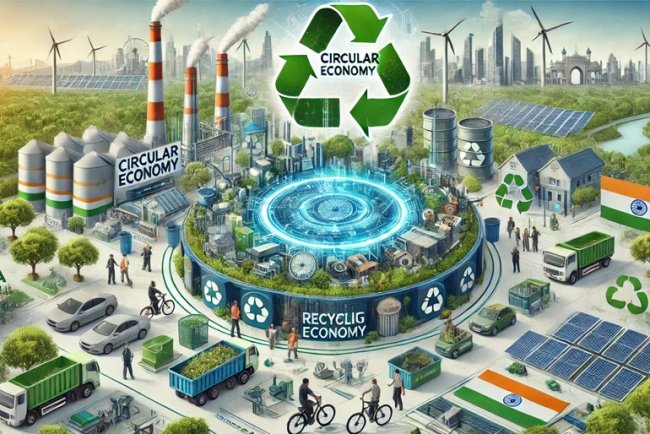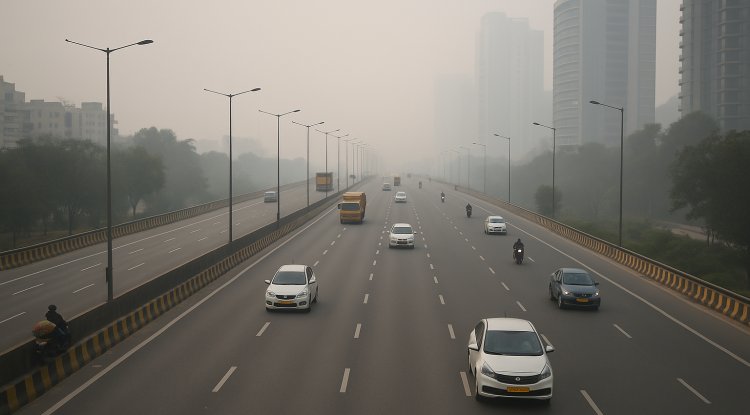From Forests To Rivers: India’s Fight Against Plastic Pollution
India’s battle against plastic pollution and deforestation demands more than policies—it calls for people-powered action, local innovation, and data-driven change

On a warm morning in Delhi’s Central Ridge forest, hundreds of schoolchildren, college students, and local residents moved silently through the undergrowth. They weren’t there for a picnic or a protest. They were picking up plastic.
By afternoon, they had cleared nearly 5,000 kilos of non-biodegradable waste. “It’s shocking how normal this pollution has become,” said Manas Raghuvanshi, Director of the BN Welfare Foundation, which organised the Plogathon. “But the real shift happens when people stop waiting for someone else to clean it.”
India generates over 4 million tonnes of plastic waste every year. Much of it seeps into forests, rivers, and even our food systems. It’s a slow-moving crisis—one that’s both everywhere and easy to overlook.
But plastic is only part of the larger environmental picture. Despite years of afforestation schemes, India’s forest and tree cover remains stuck at 25.17%, far below the 33% target set in 1988. “This is not just a statistic,” said Sushma Vasudevan, Managing Director at BCG. “It shows that despite our efforts, we need more transformative approaches.”
One such approach is unfolding in Rajasthan, where the Forest Department, with support from BCG, JICA, and the state’s IT department, is building India’s first Forest Data Exchange. A platform called DigiVan is already being used to gather satellite-based insights on forest health, carbon stocks, and canopy cover. Vasudevan says it’s about “bringing everyone—government, NGOs, researchers, communities—onto the same page.”
Technology is helping. But the crisis runs deeper.
Raghuvanshi and his team are also working to revive the Hindon River, once a lifeline of western Uttar Pradesh, now declared ecologically ‘dead’ due to decades of untreated waste and plastic pollution. “People assume the rains will wash everything away,” he said. “But the plastic we leave behind flows downstream—into the Yamuna, then the Ganga, and finally the ocean.”
The challenge isn’t just about cleaning up. It’s about building systems where waste doesn’t get generated in the first place.
That’s where people like Sanskriti Kapoor, VP of ESG at Omnivore, see hope. “We’re seeing rural innovators turn crop waste into packaging, or create industrial materials from biomass,” she said. “It’s not about copying global models—it’s about building local, circular solutions that work here.”
Startups like Fibmold and AltM are developing packaging materials from agri-residues like husk and bagasse—designed to biodegrade in backyard compost pits, not just industrial plants. “If policy, infrastructure, and public behavior align,” Kapoor said, “we can turn our waste into value.”
While these new-age startups innovate at the source, companies like Embassy Group are tackling waste at the community level. In partnership with The Anonymous Indian Charitable Trust (TAICT), Embassy addressed rampant waste dumping in Bettahalasuru Panchayat, North Bengaluru—where 53 metric tonnes of waste were being mismanaged monthly.
“Through an end-to-end system—covering collection, transport, segregation, processing, and setting up the EcoHub solid waste management centre—we’ve recycled 1,100 tonnes of dry waste, saved 6,641 trees, and preserved over 14,500 cubic metres of landfill space,” said Shaina Ganapathy, Head of Community Outreach, Embassy Group. “More importantly, we promote everyday habits like reducing single-use plastics and segregating waste at home.”
The same principle applies in construction. Bala Ramajeyam, a real estate developer in Tamil Nadu, says that the sector is slowly shifting. “We’ve planted over six lakh saplings, and are switching to alternatives like bamboo and reclaimed wood,” he said. “But more importantly, we are cutting down packaging and using less plastic on our construction sites.”
Meanwhile, satellite companies like Satyukt Analytics are using space-based tools to monitor land and water health. “We can see plastic traces from space,” said Dr. Yukti Gill, the firm’s co-founder. “But the real work starts on the ground—when data drives action.”
What unites all these voices—from forests to factories, classrooms to satellites—is a simple belief: India can’t afford to treat environmental action as someone else’s job. “Plastic pollution affects everything—from food to floods,” said Ashish Agarwal of WRMS. “As we work on the Aravalli Green Wall and other climate buffers, let’s remember—it’s not just about planting trees. It’s about ending the harm we’ve already caused.”
As India marks another World Environment Day, the call is clear: this crisis won’t wait. Whether it's through planting, innovating, tracking, or simply picking up what shouldn’t have been thrown in the first place—there is work for all of us.
What's Your Reaction?
















